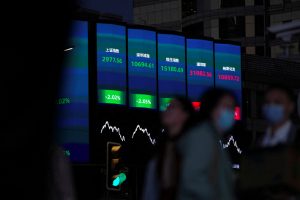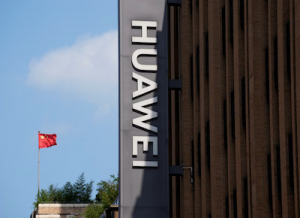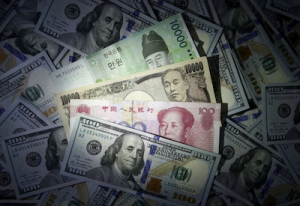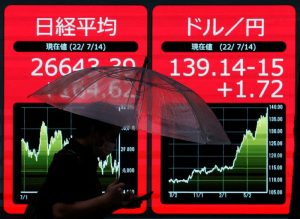With more sophisticated hedging and financial products, China is creating new opportunities for foreign investors looking for greater onshore exposure and collateral mobility
The liberalization of China’s capital markets has accelerated in recent months, making it easier for foreign money to flow in and out through enhanced cross-border trading schemes, abolished investment quotas and an expanded scope of permissible financial products.
Reform-minded regulators in the country — who see the benefits of adding foreign institutional capital into the country’s retail-oriented ecosystem — have relaxed foreign-exchange rules, allowed new trade types such as stock lending and futures, and indicated that fixed-income repurchase agreements are coming.
“We’ve seen huge momentum from global investors seeking to take advantage of China’s market deregulation, through our custody, FX and collateral management platforms,” China Country Executive at BNY Mellon Sam Xu said.
Currently, foreign owners account for only 3% of domestic fixed-income securities in China’s onshore bond market, in part because the country has tightly controlled China’s currency and sought to protect local companies from outside speculators and what they perceive as unstable capital. Now, all that is changing because of global macroeconomic forces that are reshaping its domestic economy.
Capital market reforms continue
Demand from institutional investors abroad is showing up in the rising number of account openings, daily trading turnover and assets in custody. Many of the new entrants are overseas hedge fund managers, private equity firms and institutional fund managers, seeking either local licenses through the qualified foreign investor (QFI) scheme or offshore gateways that are operated from Hong Kong.
In 2020, China gained $192.8 billion of foreign portfolio debt flows, close to double the $102 billion for all of 2019, according to the State Administration of Foreign Exchange (SAFE). The amount of yuan-denominated domestic financial assets held by foreign investors was $1.43 trillion as of the end of March 2021, according to the People’s Bank of China, up from $437 billion at the end of 2016.
China’s commitment to opening its capital markets has continued despite recent political developments between the US and China. Chinese regulators have become increasingly flexible because they see that more investors will help the country’s capital markets to flourish and domestic companies to raise cash.
The Stock Connect programme, launched in 2014 for foreign investors to access China’s Shanghai and Shenzhen stock exchanges through Hong Kong, in February provided access to eligible A-shares listed on the Shanghai Stock Exchange’s (SSE) Sci-Tech Innovation Board (STAR Market).
Bond Connect has separately taken off since launching in 2017. In April, BNY Mellon became the first triparty agent to enable foreign investors to pledge China government bonds as collateral.
Deregulatory efforts
Dealers have sought the ability to use China government bonds as collateral for years because if those firms are sitting on inventory, without it being monetised, those bonds are trapped on their balance sheet and can prove costly when static. The balances of Stock Connect collateral in triparty have increased more than 150% over the past year.
“With [Stock and Bond] Connect securities representing a growing share of banks’ balance sheets, the focus on identifying solutions to use these securities, including as collateral in financing transactions, continues to increase across the market,” Nehal Mehra, global co-head of cross asset financing with global markets at Goldman Sachs, said.
Other deregulatory efforts have allowed the foreign institutional investors licensed onshore to trade on margin, lend or borrow China A-shares through onshore brokers and custodians, and to transact in new financial and commodity futures as hedging tools for the first time.
“Firms who prove agile enough to capture these long-awaited opportunities in securities finance, collateral efficiency and hedging can get a meaningful edge in their execution,” Xu said.
Last year, authorities in China merged the separate Qualified Foreign Institutional Investor (QFII) regime with a sister one for renminbi investments (RQFII), creating a unified QFI channel.
Some impediments
But there remains plenty of work to do before offshore investors can get the full extent of access that they want through the QFI regime, while not being physically located in China.
Meanwhile, eligibility for stock lending among offshore asset owners using Stock Connect is restricted to exchange members, although it is understood that regulators see the benefits of permitting this if they can control aspects of short selling that they view as harmful.
Added to that, China has no concept of agency lending in securities finance. When an offshore institution wants to finance Stock Connect shares in their inventory to generate cash, they either do so as a principal using their custodian for support, or they pledge the China A-shares acquired under the Stock Connect scheme, in which case the shares are held by triparty agents.
The limited access to hedging solutions, however, remains an impediment for global hedge funds that run low net exposures, rather than one-directional portfolios. Currently, offshore funds are not allowed to engage directly in equity or interest-rate futures, only a limited set of internationalised commodity derivatives. Even their currency hedges have to be linked to CNH, the offshore version of the yuan.
China’s central bank has also steadily advanced work on cross-border use cases of a digital yuan and sustainable investing among asset managers with environmental, social and governance (ESG) mandates. These hot new areas, combined with the recent reforms, could herald a new era in China’s ability to attract foreign sources of capital.
The question remains how much capital, when some of the particulars such as timelines and caveats are yet to be announced by the authorities. Global investors are aware that these guardrails could take time, given that domestic and external macro developments may impact the Chinese reform agenda.
# Katy Burne is Editor-in-Chief of Aerial View Magazine, a content series originated by BNY Mellon. Before becoming a content and communications strategist for the bank, she spent 10 years as a markets reporter at the Wall Street Journal in New York, covering fixed income, market structure and the Federal Reserve.
Read More:
Asia’s fixed income market inviting in low interest rate world
Asian fixed income shows plenty of post-pandemic opportunities
























